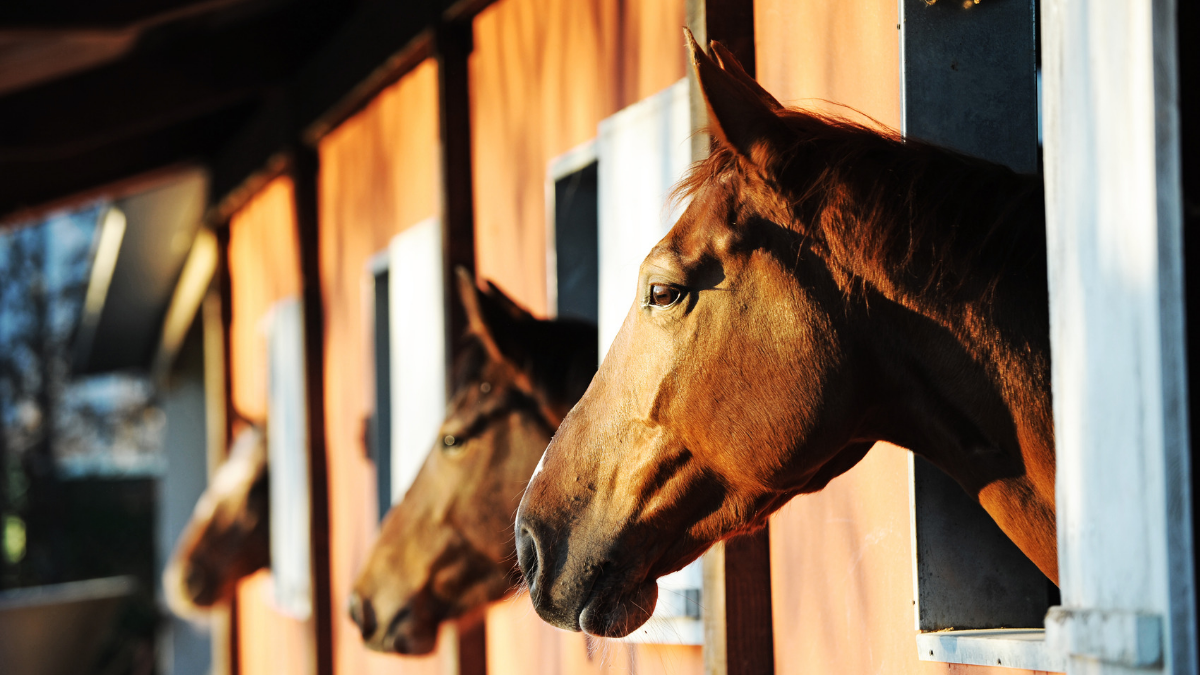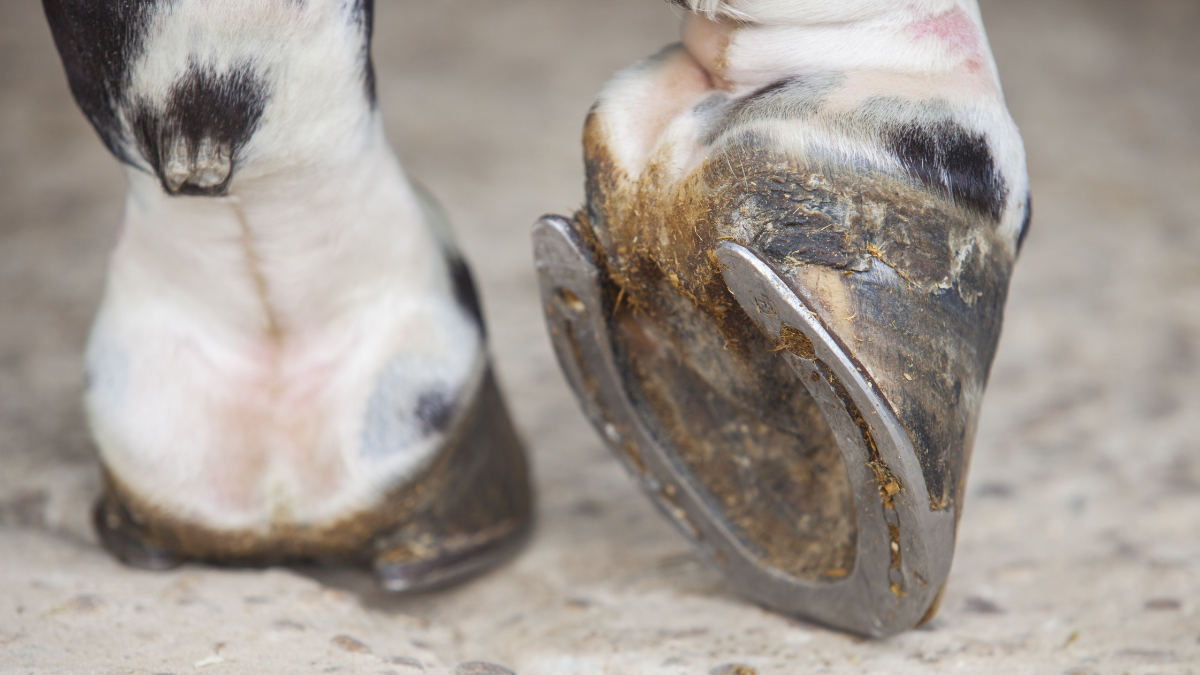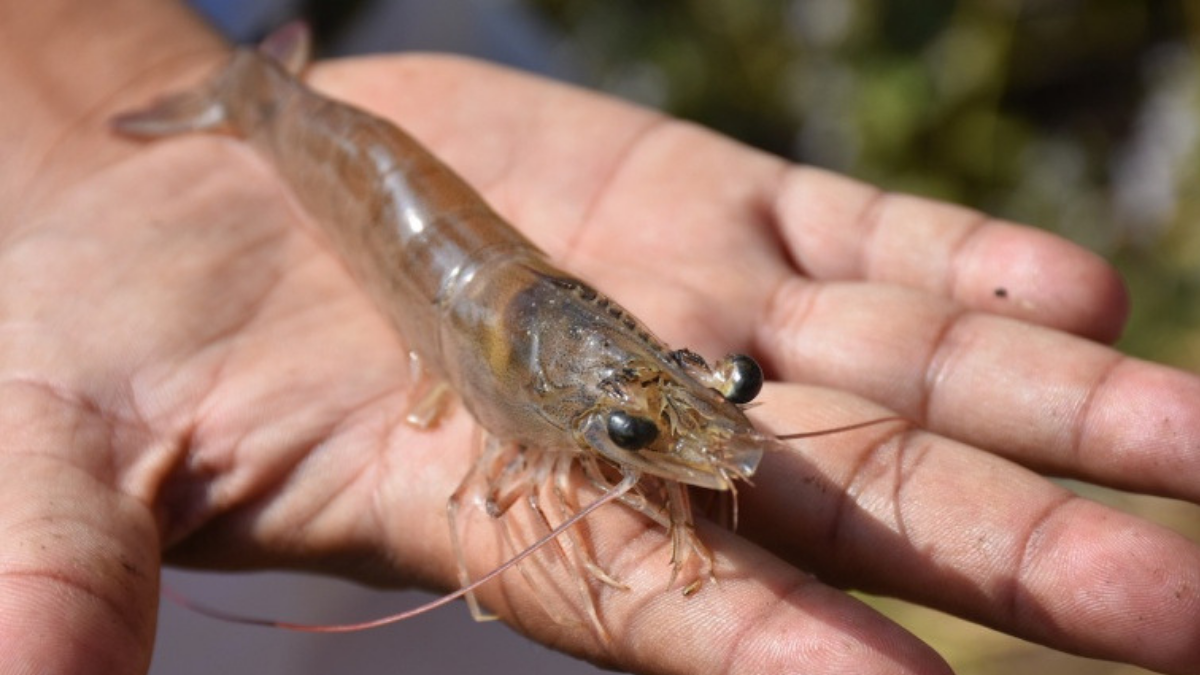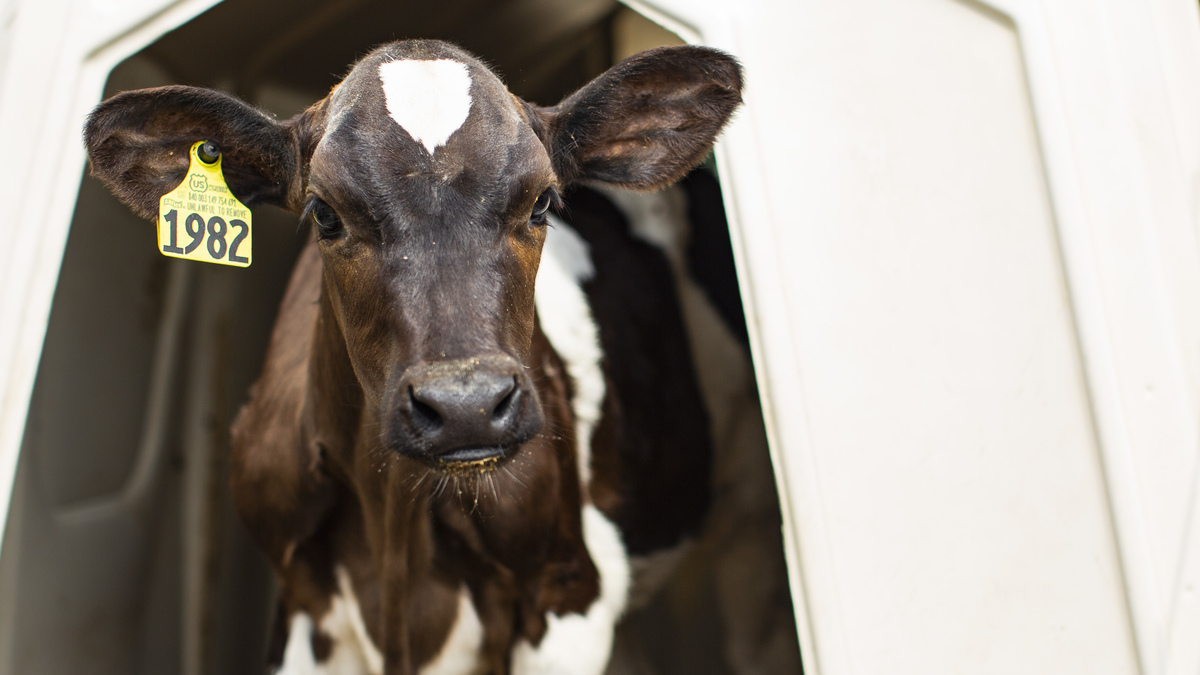Dietary trace minerals like copper, zinc and manganese are nutrients critical to animal health, performance and welfare. Immunity, reproduction, growth and even meat and milk quality hinge on optimal trace mineral nutrition.
Everything we know about trace mineral nutrition, from inclusion levels to effects on performance, has come from studies using inorganic trace mineral salts. Trace mineral salts are made from a trace mineral loosely bound to a charged ion and have been the basis of trace mineral supplementation and research since the 1930s. Recent studies, however, are using a different form of trace mineral, and the results of those studies are challenging ideas once considered fundamental to livestock nutrition.
In the early 1990s, organic trace minerals were first developed to reflect the way trace minerals naturally occur in plants. These supplements have a protein-like or carbohydrate ring structure that attaches to the trace mineral at multiple sites. The protein or carbohydrate component serves as a protective, stable delivery system, increasing the likelihood of mineral absorption.
The last 20 years of research confirm that the difference between a mineral salt and a trace mineral bound to a stable organic ring are substantial. The evidence points to organics as a superior source of trace minerals, but beyond that, we see unprecedented effects in the animal when they receive optimally formulated minerals. Organic trace minerals are changing the way we look at livestock nutrition overall.
Below are seven major changes to nutritional dogma instigated by studies looking at organic trace minerals. While many nutritionists still cling to the low-priced, traditional inorganics, organic trace minerals are fostering a revolution in animal feeding.
1. Not all trace mineral forms are created equal
Historically, inorganic trace minerals have been the primary form of mineral supplementation. Their inexpensive synthesis, however, produces a supplement that quickly dissociates and reacts within the feed and digestive tract.
Dr. Richard Murphy is a biochemist and research director in Dunboyne, Ireland, who has focused much of his work on characterizing, comparing and optimizing trace mineral supplements.
"When comparing mineral products — both inorganic and organic — the key differentiation point is to understand their stability through the GI tract," said Murphy. "Stability at the acidic pH found in the gastric environment is critical to ensuring maximal delivery of mineral to sites of mineral absorption in the intestine."
Dr. Murphy's work has repeatedly shown that organic trace minerals are far superior to traditional inorganic trace minerals in both stability and overall bioavailability. They are, in fact, so much more efficient that countless animal trials have shown that organic trace minerals can be fed at significantly lower levels than their inorganic counterpart without disrupting health and performance.
Surprisingly, Dr. Murphy's research has also found that not all organic trace minerals are created equal.
"Ultimately, the type and position of the amino acids used in organic trace minerals are critical for stability," said Dr. Murphy.
Different brands of organic trace minerals use different amino acid and peptide strands, some with far weaker associations and lower stability than others.
Dr. Murphy and his research associates have developed a peptide-trace mineral configuration for use in organic trace minerals that provides optimal stability. It is, in fact, his work in differentiating organic and inorganic trace minerals that has laid the foundation for the six other breakthroughs in mineral nutrition.
2. Inorganics: Not required
The National Academies of Sciences, Engineering, and Medicine (NASEM) publishes livestock requirements for all essential nutrients, among which it lists inorganic trace minerals. New research, however, proves that, while trace minerals are essential, there is no absolute requirement for inorganic trace minerals. In fact, eliminating inorganics altogether and replacing them with organic trace minerals appears to enhance performance.
In beef cattle, a total replacement of inorganic trace minerals with lower levels (60 percent) of organic trace minerals improved health and performance and generated a $50/head advantage (Holder et al., 2016). Total replacement with organic trace minerals in pigs improved average daily gain, increased slaughter weight by 2 kg and improved slaughter efficiency to generate a savings of $1.80 per pig.
Inorganics may prevent deficiency, but there are far more effective supplement options. Even operations feeding a combination of inorganic and organic trace minerals stand to benefit from converting to 100 percent organic trace minerals. The total replacement of inorganics offers the best results in achieving animal genetic potential.
3. Organic trace mineral bioavailability: using less to do more
Studies routinely feed organic trace minerals at levels 30-50 percent lower than inorganics because the superior delivery system of organics allows them to be more efficiently absorbed. Poultry scientists at the University of Kentucky asked, "Just how much more efficiently?"
In their study, broilers were fed organic trace minerals at levels 75 percent lower than commercial levels for inorganics. These birds reached a desirable market weight in the standard six-week period and showed no signs of deficiency or disease, even though they were fed only one-quarter the mineral ration of their inorganic-fed counterparts (Ao et al., 2009). These relative concentrations are below those traditionally recognized as needed for meeting the birds’ requirements.
Organic trace minerals are more effectively absorbed and deposited in the intended tissues, so small amounts can have a greater impact. The inefficiency of inorganics requires producers to significantly overfeed them. Organic trace minerals offer a way for producers to maximize resources. This research also gives us a clearer picture of what an animal's true trace mineral requirements might be.
4. Organic trace minerals contribute to significant improvements in animal health
Trace minerals have a lock-and-key effect on certain antioxidant enzymes that are critical to immune function. A sufficient supply of trace minerals can be described as the sustaining fuel of the immune system. Recent feeding trials and nutrigenomic studies showcase organic minerals taking on some of agriculture’s most costly diseases.
In feedlot cattle, a total replacement of inorganic trace minerals with lower levels of organic trace minerals (60 percent of commercial levels for inorganics) was able to reduce mortality by 57 percent and mortality due to bovine respiratory disease (BRD) by 69 percent. Even in the cattle contracting BRD, the number of retreats was significantly reduced with organic trace minerals (Holder et al., 2016). Too good to be true? A separate study conducted on a different continent confirmed the effects: organic trace mineral groups showed a 7.7 percent decrease in even the incidence of BRD (Sgoifo Rossi et al., 2018).
"BRD costs the U.S. beef industry upwards of $800 million and is the greatest concern and cause of loss at the feed yard,” said Dr. Vaughn Holder, lead beef researcher at Alltech. “Organic trace minerals provide a new reinforcement to the animals’ first line of defense and add tremendously to the producer’s peace of mind."
In poultry, necrotic enteritis (NE) brings devastating costs, approaching $6 billion annually with mortality rates of 1 percent per day. Organic trace minerals eliminated bird death due to NE, reducing mortality by 12 percent compared to inorganics (He et al., 2017; Bortoluzzi et al., 2017). Birds on organic trace minerals also showed significant positive changes to the expression of genes related to improved disease resistance.
From gene expression to disease markers and mortality, there is mounting evidence that the bioavailability of organic minerals better equips animals to take on and survive disease challenges.
5. Organic trace minerals lead to extended shelf life and improved meat quality
The impact of organic trace minerals spans the entire food chain, all the way to our own refrigerators. Animal nutrition directly affects meat quality, as feeding organic trace minerals results in meat that lasts longer and tastes juicier.
"Trace minerals are essential to antioxidant enzymes in the meat," said Dr. Rebecca Delles, an Alltech meat scientist. "By providing a trace mineral source that is more bioavailable, those antioxidants have a better mineral supply to sustain their activity."
Proving her point, beef from steers that were fed organic trace minerals showed increased antioxidant activity, which led to extended shelf life (Sgoifo Rossi et al., 2018). That same meat also showed increased water retention, which improves profitability and texture. Dr. Delles found that organic trace minerals had the same effect in pork loin and chicken breast, beneficially improving both sensory experience and the producer’s bottom line (Delles et al., 2014; Delles et al., 2016).
"The average amount of time it takes a consumer to recover from a bad meat purchase is three months,” said Dr. Delles. “If the appearance, flavor or texture is perceived as being low quality, it will be another three months before the customer reconsiders purchasing that meat product. In fresh pork, if only 5 percent of U.S. consumers have a bad meat experience, that could still bring a projected loss of 3 percent — or $181,938,556.80 — over the course of 12 weeks due to what might seem like 'just color or texture.'"
6. More efficient organic trace minerals decrease the environmental impact of livestock
Bioavailable organic trace minerals are the exclusive method of sustaining animal performance while simultaneously lowering environmental impact.
The instability of inorganic minerals makes them difficult for the animal to absorb. This often leads to overfeeding of trace minerals and, therefore, excretion of large quantities of minerals back into the environment. These excreted minerals alter what is known as a “mineral footprint” and contribute to soil and water contamination.
The improved bioavailability allowing lower inclusion rates of organic trace minerals has been found to directly reduce the mineral footprint of livestock.
A series of trials conducted by agriculture institutions across China in 2017 found that in swine, poultry and ruminants, organic trace minerals could be fed at substantially lower quantities than inorganics and yield the same performance — but return much lower mineral excretion. The same was not true for inorganics: while low levels of inorganics also reduced mineral excretion, they were detrimental to animal health and reduced performance (Guo et al., 2017; Ma et al., 2018; Qui et al., 2018).
"This type of research changes the way we study animal nutrition,” said Dr. Karl Dawson, ruminant microbiologist and chief scientific officer at Alltech. “These are the solutions we need to sustainably feed our growing populations — benefitting all stakeholders while decreasing the environmental impact of intensive animal production systems."
7. Optimal organic trace mineral nutrition improves herd health, reproduction and performance for multiple generations
Trace minerals have a multigenerational effect. Like other nutrients, trace minerals change gene expression, effectively turning genes on or off, up or down. Those changes in gene expression are heritable — meaning the effects of a mother's nutrition, good or bad, are passed on to her offspring before they even take their first bite of feed. This phenomenon, known as epigenetics, gives producers and nutritionists the power to use nutrition to build their future herd.
Dairy scientists at Pennsylvania State University studied a herd over three generations and found that heifer calves experienced 10 fewer days of sickness and came into estrus 26 days sooner when their dams were fed organic trace minerals (Gelsinger et al., 2016; Pino et al., 2018). This was true even for heifer calves who didn't consume organic trace minerals themselves, confirming that the effect was solely due to maternal nutrition. Fewer days of sickness are correlated to increased milk production later in life and reaching reproductive maturity almost one month sooner, which is worth approximately $100/head in management costs and a 2-3 percent decrease in carbon footprint.
In beef cattle, calves born to cows fed organic trace minerals showed improved body weight through weaning and again at 205 days, regardless of their own diet (Price et al., 2017). Weaning is one of the most critical stress points in the beef life cycle — but organic trace minerals in utero allowed weaning and young calves to thrive despite their circumstances. While trace minerals can have an incredible impact on a single animal, results like these show potential for strategized feeding for the future herd.
The advent of precision feeding
From feed to fork, trace mineral source makes all the difference. Organic trace minerals provide livestock with an essential nutrient in an optimized form, and the effects of such precision reverberate throughout the entire food chain. With effects on animal health and welfare, producer livelihood, consumer preference and environmental protection, no stakeholder is overlooked. This is the advent of a revolution in precision feeding. Well-timed, optimally designed nutrients can reveal to us an animal's real requirements and allow them to achieve their true genetic potential, so that we can build better herds and feed a growing population.
Click here to learn more about solutions through the Alltech Mineral Management program.
Citations
Holder, V. B., Jennings, J. S., Covey, T. L. (2016). Effect of total replacement of trace minerals with Bioplex® proteinated minerals on the health and performance of lightweight, high-risk feedlot cattle, Journal of Animal Science, 94 (5), 120
Taylor-Pickard, J., Nollet, L., and Geers, R. (2013). Performance, carcass characteristics and economic benefits of total replacement of inorganic minerals by organic forms in growing pig diets, J. Appl. Anim. Nutr. 2 (e3): 1-3
T Ao, JL Pierce, AJ Pescatore, AC Cantor, KA Dawson & MJ Ford. (2009). Effects of feeding reduced levels of organic minerals (Bioplex) on the development of white layer pullets, Poult. Sci. 88 (Suppl. 1), 197
Sgoifo Rossi, C.A., Ripamonti, G., and Compiani, R. (2018, May). Not all mineral supplements for beef cattle bring same results. Feedstuffs, 90 (5).
He, B., King, W., Graugnard, D., Dawson, K.A., Bortoluzzi, C., Applegate, T. (2017). Zinc source influences the gene expression of zinc transporters in the jejunum and cecal tonsils of broilers challenged with coccidia and Clostridium perfringens., Poultry Science Association Annual Meeting, Orlando, FL, USA, 17-23 July, 2017
Bortoluzzi, C., Lumpkins, B., Mathis, G., King, W.D., Graugnard, D., Dawson, K.A., Applegate, T. Comparative efficacy of dietary zinc sources for the mitigation of the impact of necrotic enteritis in coccidial challenged broiler chickens, Poultry Science Association Annual Meeting, Orlando, FL, USA, 17-23 July, 2017
Delles, R.M., Xiong, Y.L., True, A.D., Ao, T., Dawson, K.A. (2014) Dietary antioxidant supplementation enhances lipid and protein oxidative stability of chicken broiler meat through promotion of antioxidant enzyme activity, Poult. Sci. 93:1561-1570
Delles, R.M., Naylor, A., Kocher, A., Dawson, K.A., Samuel, R.S. (2016). Diets with organic trace minerals (Bioplex®) and yeast protein (NuPro®) improved the water-holding capacity of pork loin meat, Midwest Animal Science Meetings, March; J. Animal Sci. 94 (Supple. 2): 65
Guo, Y., Liu, B., Xiong, P., He, J., Gang, L., Xue, Y.,Koontz, A.F., Yu, D. (2017). Effect of Cu Provided As Bioplex® Cu or TBCC for Weaned Pigs, Growth Performance, Tissue Mineral Retention, and Fecal Mineral Excretion, ASAS-CSAS Annual Meeting, 17-20 July, Baltimore, MD, USA, 2017
LX Ma, JN He, CC Hou, JL Qiu, XT Lu, B Liu, G Lin, Y Xue, AF Koontz, DY Yu. (2018). Effect of compound organic trace minerals on growth performance, serum indices and micromineral excretion in fattening pigs, ASAS-CSAS Annual Meeting, 5-8 July, Vancouver, Canada
JL Qui, XT Lu, LX Ma, CC Hou, JN He, B Liu, G Lin, T Ao, DY Yu (2018). Effect of low dose complex organic trace minerals on productive performance, egg quality and fecal mineral excretion of laying hens, Poult. Sci. 97 (e-Suppl. 1): 202
Price, D.M., Arellano, K.K., Irsik, M., Rae, D.O., Yelich, J.V., Mjoun, K., Hersom, M.J., (2017) Professional Animal Scientist 33: 194–204
Gelsinger et al., 2016 Maternal and early life nutrition and calf health
Pino et al., 2017 Maternal and early life nutrition and offspring first lactation






















